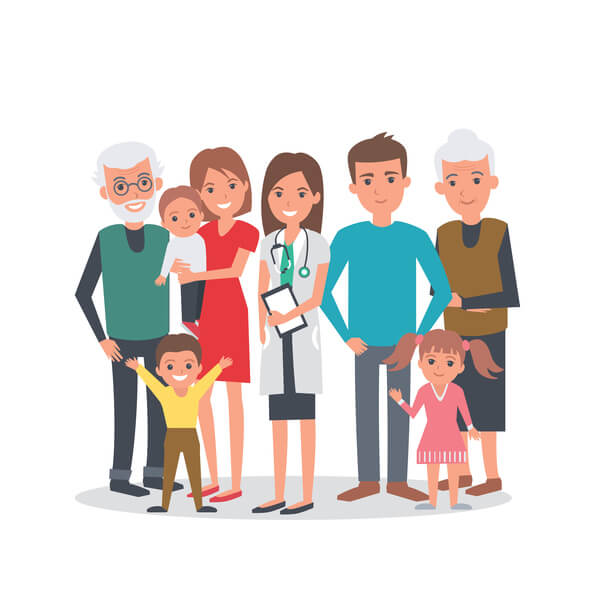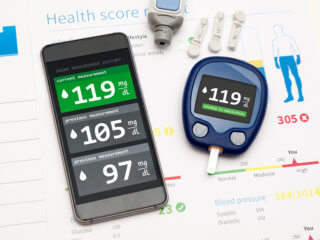In the last decade, technology has continuously developed and innovative solutions like eHealth, mHealth have come into the picture. The traditional life sciences chain can’t keep up with the challenges and opportunities of the industry. Patient’s needs are changing, and new therapies, devices and products are emerging. 21% of the patients are engaged in health care in the United States, and 34% are somewhat worried about their current health. Thus, a dynamic, sense-and-respond market and patient centric health networks are now needed as a core prioritized strategic capability.
Creating a culture of health – health care consumerism and ‘Quantified-Self.’
The concept of preventative health care system has been with us for a long time. The government wants to spend most of their resources in early stages of patient care continuum by empowering them with knowledge and engaging them. With the advent of value-based health care, patients need to take control of their choices and decision concerning their health.
Patient engagement 2.0 signifies a shift from a manual, paper-based patient communication activities to a digitally supported process that helps providers, payers and other stakeholders to communicate with patients at every stage of their health care journey. It is aimed at achieving improved care coordination between patients and physicians, allowing incoming, chronic patients to seek preventative and reactive intervention and to ensure delivery of personalized and dynamic care recommendation to every patient.
Patient or consumer engagement is the focus of various health care stakeholders like employers, industrialists, families, communities, providers and health insurance companies. They strive hard to provide tools and information to the patients that can prevent their hospitalization, readmission, recurring diseases, predict comorbidities and infections and treat patients from chronic diseases.
Some factors influence the process of engaging patients as consumers. In spite of growing demand for more involvement in their health care, barriers such as lack of access to tools and services, data privacy and confidentiality issues, lack of interest among physicians result in continuing patient disengagement.
Some devices firms offering patient engagement solutions include Phillips, Stryker and Boston Scientific.
| Recommended for you | |
| Diabetes prevention programs | |
| Direct-to-Consumer tests for genetic health risks | |
| Convergence of health IT, public policy and medicine |
Prevention: Influence of employee-centric health networks on occupational sickness costs
Arvato CRM Solutions has developed a corporate health care program, called”High Vitality People.” The core of the program is a health check-up with the so-called “Preventiometer”: during a virtual bicycling tour, the device, which looks like a futuristic exercise bike, measures all of the relevant health data including hearing and eye tests, blood values and stress levels.
The health data of the participants are then anonymously stored on the “health cockpit,” a security certified online platform. The members of the program have exclusive access to the data; if needed, they can release the data to the company doctor, who examines it to rule out serious illnesses or, if deemed necessary, advises the employees to see a specialist.
The third element of the program is ‘Coaching’ in which a coach explains the individualized health results to participants, develops personal goals with them, and recommends possible ways towards achieving them such as company sports offers or behavioral changes. The coaching can be provided telephonically, through video call or a mobile application.
99% of the employees would recommend the program to other employees, and over 88% are highly motivated to improve their health state.
Diagnostics: The impact of patient centric health networks on improving health outcomes
Connected health calls upon the developers to design medical and health service solutions which contain all the treatment and health information about patients. This data can be used to train new clinical decision support algorithms using Analytics and Machine Learning.
SAP Medical Research Insights is a tool which provides the facility of accessing and analyzing different medical data. It helps health care and research organizations gain meaningful medical insights from Big Data. Leveraging the SAP Connected Health platform, the SAP Medical Research Insights solution enables physicians and researchers to filter and group patients by multiple attributes, perform Kaplan-Meier analysis and visualize individual patient timelines in real time.
Today, almost all of our cancer treatment insights come from a tiny subset of clinical trial patients. In the United States, 1.7 Million people are diagnosed each year with cancer, but only 3%* enroll in clinical trials. To improve care for every patient, we need insights from the other 97% of people receiving cancer care.
CancerLinQ connects and analyses real-world cancer data from almost any electronic record source—to improve the quality and value of care for all. It provides real-time quality feedback, allowing doctors to compare their care against guidelines and the care of their peers and detects patterns in patient characteristics, treatments, and outcomes to improve care. It has a database of almost 1 Million patient records from more than 60 practices.
Light Therapy – innovative phototherapies for patients
Light Therapy or Phototherapy consists of exposure to daylight or to specific wavelengths of light to treat rheumatic diseases, inflammatory diseases, chronic diseases like skin cancer and baby jaundice. Different sources of light used are Incandescent lamps, Lasers, and LEDs among others.
The light sources are being embedded into various medical devices such as wearable objects, full body cushions for the continuous exposure to the light and they are also equipped with sensors to monitor the skin disease. Before launching any product into the market, companies need to ensure that their light therapy device is safe and in working condition.
Phillips, a leading company, working in the area of health and light, introduced world’s first wearable blue LED light device for the relief of muscular back pain. Blue LED light has also been known to have anti-inflammatory and anti-proliferative properties. Thus, it can be used to treat mild to moderate Plaque Psoriasis and Eczema. Clinical trials have proven about 50% reduction in symptoms of Eczema after undergoing blue light therapy.
Prospects: Biohacking – a data security solution?
Technology is getting smaller and smaller with each passing day. It has led to the introduction of different devices such as wearables, hearable and patchable. Biohacking is the practice of managing your biology using medical, nutritional, physical, or electronic techniques. Implantable devices have been at the heart of biohacking revolution.
Implants can be used to solve a large number of problems from opening your door without keys to sensing temperature and storing your data. Biohackers have been working tirelessly to replace plastic identity cards, bank cards with something that can be implanted in our bodies. This technology will revolutionize public transportation system, health care and a host of other domains. Implants will also be used in the brain to brain communication including scalable intelligence.
One of the biggest challenges that are encountered while developing such devices is ensuring security and confidentiality. Implants generate private information and passwords within your body. If they are not connected to a user’s body, they are not hackable anymore.
Recent studies have shown that approximately 70% of the teenagers in the age group of 15-18 are open to implants.
Opportunities and the potential of connected health
A couple of challenged plaguing the current health care system includes lack of health care professional, increase in chronic diseases and surge in health care costs. By 2020, the health sector will have the absence of 13 Million health care professionals. This will lead to increase in cost incurred on health care. 70% of the EU health care cost is caused by NCDs.
Innovative solutions are being developed to ensure accountability and empowerment for patients and consumers. Patients are asked to manage their health themselves without tapping into the health care resources that incur the high cost and require specialty which will lead to better resource utilization, cost reduction and improved standard of attention.
Having a connected health ecosystem which generates health data regularly, is the need of the hour. Using this unstructured data and applying various Analytics and Machine Learning techniques, we can learn and predict future health problems. We need standards and guidelines governing the flow of health data for cross-border exchange and interoperability of data.
Recent technology advances and market dynamics have set the stage for an overdue transformation — creating a new approach, where people have the tools and information needed to take charge and make healthier personal choices.Analyzing data for positive outcomes and giving guidance to the patients.
| Technologies | Medical Conditions | Research Areas |
|---|---|---|
| Medical data analysis, Machine Learning, Data Analytics, Phototherapy, Smart Implants | Skin Cancer, Baby Jaundice, Plaque Psoriasis and Eczema, Muscular back pain | Use of LED in treating numerous diseases, Smart implants to store patient health records |
Moderation: Christina Rode-Schubert, TCI GmbH Mannheim, Germany / Senior Partner / Former CIC Europe Secretary General
Speakers:
Siddharth Saha, Frost & Sullivan / London / Great Britain / Director of Healthcare Research Europe
Emek Altun, Bertelsmann arvato CRM Healthcare GmbH, Berlin /Germany / Business Unit Head of Prevention
Axel Fasse, SAP SE, Walldorf / Germany / Project Manager / Senior Researcher Products & Innovation Technology Mobile Empowerment
Matthias Born, Philips GmbH Innovative Technologies, Aachen / Germany / Director Clinical and Scientific Affairs
Philips Light & Health, BG Emerging Business Principal Scientist, Philips Group Innovation, Research Europe
Patrik Kramer, Digiwell – upgrade your life / Hamburg / Germany
Horst Merkle / Roche Diabetes Care Inc. / Indianapolis / USA / Director Diabetes Management & Platform Solution
Video URL: https://www.youtube.com/watch?v=3-3HrK136s0&index=12&list=PL98iSagl_rnIwKONL-dQmj9Y1mOGAjvW8
Upload Date: 27th November 2016
Video code: 16R204
SAP Medical Research Insights: https://icn.sap.com/projects/sap-medical-research-insights.html
CancerLinq: https://cancerlinq.org/
*Source: https://cancerlinq.org/
Image credit: www.istockphoto.com

















